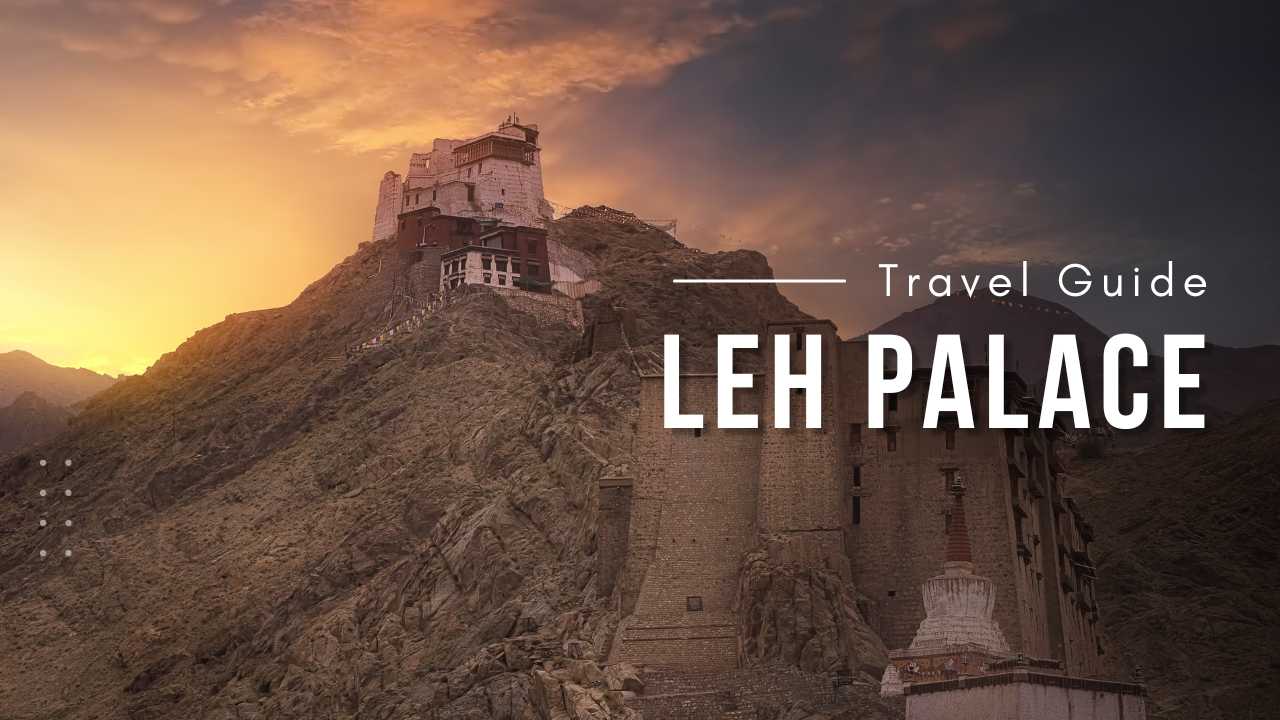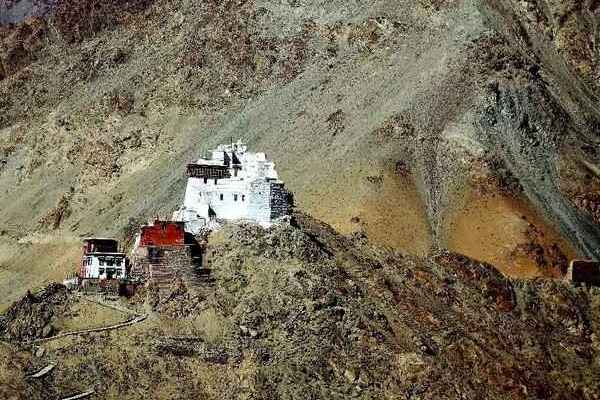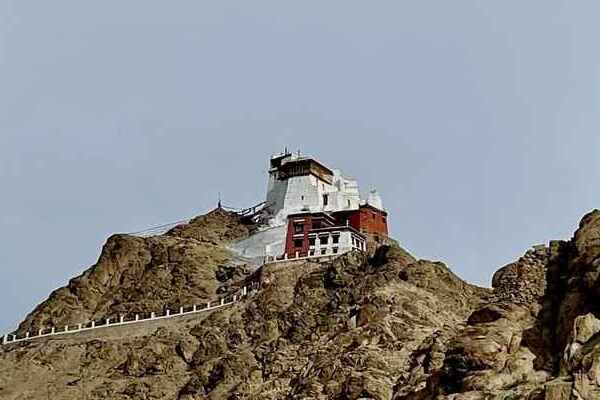
Leh Palace is a silent sentinel to centuries of history, culture, and building brilliance. The rough, mysterious landscapes of Ladakh surround it. When you walk through its old doors, you’re taken back to a time when kings ruled, stories were told, and wood and stone embodied the beauty of timelessness.
In this immersive journey, we set out to learn more about Leh Palace’s fascinating past, complex architecture, and hidden stories. This palace, which rises elegantly against the majesty of Ladakh’s mountains, isn’t just a building; it’s a doorway to a different time. We’ll get to know this royal building better as we walk through its booming hallways, look at its intricate carvings, and take in the wide views from its windows.
Join us as we walk through the halls of time, where the echoes of whispered conversations can still be heard, where carefully kept artifacts bring the past to life, and where the panoramic views remind us of how important the palace was as a place of power. From its humble beginnings as a mud-brick building to its role as a symbol of Ladakh’s strong spirit, The Palace is a miniature history lesson ready to be discovered. So, pack your curiosity and step into a world where every stone has a story to tell, and every spot gives off an air of royalty.
The foundations of Leh Palace were laid in the 17th century during the rule of King Sengge Namgyal. As a symbol of his power and the might of the Namgyal dynasty, the palace was strategically positioned to overlook the town of Leh and the nearby valleys. Constructed using local materials, including mud, wood, and stone, the palace uniquely amalgamates Tibetan and medieval architectural styles. Its strategic location offered both a vantage point for monitoring the town below and a shelter against potential invaders.

For ages, the Palace served as the royal residence of Ladakh’s rulers. Its halls bore witness to the daily lives of kings and queens, courtly ceremonies, and the strategic decisions that shaped the region’s fate. The palace wasn’t just a residence but a centre of power, culture, and custom. The interiors were adorned with intricate artwork, colourful frescoes, and artefacts that showed the royal lifestyle and the artistic finesse of the time.
As the 19th century unfolded, Leh Palace witnessed a decline in its royal importance. The Namgyal dynasty faced challenges, and the house gradually fell into disuse. However, attempts have been made to preserve this historical marvel in recent decades. Restoration efforts have breathed new life into the palace, with restoration experts and historians collaborating to repair its structural integrity and protect its cultural heritage.
Today, the Palace stands as a view into Ladakh’s illustrious past. Its captivating architecture and historical artefacts offer visitors a glimpse into the region’s cultural development. The palace also houses a museum that displays a collection of royal memorabilia, traditional costumes, jewellery, and thangka paintings, creating an immersive experience that connects the modern world with Ladakh’s storied past.
The Palace is a live example of how history and great architecture can work together to make something amazing. The famous Potala Palace inspired this medieval wonder in Lhasa. It has echoes of Ladakh’s royal past and Tibetan cultural influences.
Elegant Tibet in the Middle Ages
Leh Palace feels modest grandeur because it was built like Tibetan architecture from the Middle Ages. Its design reflects its role as a royal home by giving off an air of royalty while still keeping a simple look. Unlike castles with many decorations, Leh Palace is grand because it has clean lines, strong materials, and a strong presence.
A Towering Presence
A Towering Presence: The nine-story Palace building was a great example of the engineering skills of its time. When it was built, it was the largest building in the world. The palace’s lofty height is a sight, especially seen from below. This reminds us of how important it was in history.
The Majestic Divide
The palace’s design clearly shows how Ladakh’s society is split up. The upper floors, which were only for the royal family, show how rich their time was. These top levels tell stories about the history and experiences of the dynasty. On the other hand, the stables and storage rooms on the lower floors showed how practical royal life was.

An Illuminated Legacy
The Palace turns into a beautiful light show when the sun goes down. Its front is lit with golden lights, giving it a charming glow and life to its old walls. This change shows what Leh Palace is all about: a mix of history, beautiful architecture, and a little magic.
Simplicity in Grandeur
The beauty of Leh Palace isn’t in its flashy decorations but in how well it blends building elements that have stood the test of time. Its historical and cultural ties are shown by how much it looks like the Potala Palace. The construction of the palace is a symbol of Ladakh’s strength, as it tells stories that go back generations.
Every stone in Leh Palace tells a story from the past, and the building choices show a deep understanding of the style of the time. As you walk through its halls and look up in awe at how tall it is, you become a part of its story, a tale of architectural beauty and historical respect that continues to win hearts today.
A few important information when you are planning for a visit to Leh Palace.
The summer months are May, June. September & October are best for visiting Leh Palace.
Open all Days from 9 00 AM to 6 00 PM. Closed on national holidays.
Indian Nations – Rs 15 Per Person
Foreign Nations – Rs 100 Per Person
Leh Palace is located at approximately at 11500 feet (3500 meters).
Approximately 3 km from the city center.
The palace is around 2 kilometres from the city centre. The following are the several ways to get to Leh Palace.
The Palace is located within Leh town, and hence one can explore more than 400 options from Budget home stay to Luxury Hotels. We have picked up a few best recommended properties.
We have two best plans in which you can opt to visit Leh Palace in both plans we recommend you include nearby places such as Shanti Stupa & Leh market.
Recommended itinerary for travellers arriving in Leh by Srinagar Leh highway
Remember to stay hydrated and take it easy, considering the altitude and the day’s activities.
Recommended itinerary for travellers arriving in Leh by flight or Manali Leh highway
Remember to stay hydrated and take it easy, considering the altitude and the day’s activities.